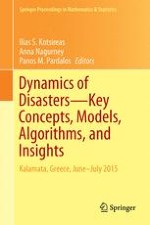This volume results from the “Second International Conference on Dynamics of Disasters” held in Kalamata, Greece, June 29-July 2, 2015. The conference covered particular topics involved in natural and man-made disasters such as war, chemical spills, and wildfires. Papers in this volume examine the finer points of disasters through:
Critical infrastructure protection
Resiliency
Humanitarian logistic
Relief supply chains
Cooperative game theory
Dynamical systems
Decision making under risk and uncertainty
Spread of diseases
Contagion
Funding for disaster relief
Tools for emergency preparedness
Response, and risk mitigationMulti-disciplinary theories, tools, techniques and methodologies are linked with disasters from mitigation and preparedness to response and recovery. The interdisciplinary approach to problems in economics, optimization, government, management, business, humanities, engineering, medicine, mathematics, computer science, behavioral studies, emergency services, and environmental studies will engage readers from a wide variety of fields and backgrounds.
